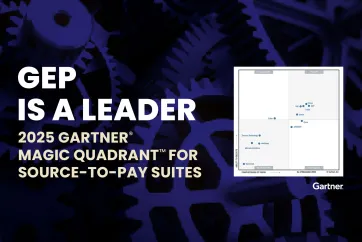
Understanding Procurement Apps and Their Use Cases
January 24, 2024 | Procurement Software read
Migrating key workflows such as contract management, supplier information tracking or spend analytics onto mobile procurement apps has been enabling procurement leaders to empower employees and business partners with on-demand access for maximized value delivery to the enterprise.
This blog post discusses the must-have phone/tablet-based use cases alongside current considerations for harnessing true mobility productivity without data fragmentation through a procurement software platform-driven approach.

Why Advanced Vendor Management Solutions are Indispensable for Procurement
January 23, 2024 | Procurement Software read
How can businesses mitigate risks, sail through uncertain times and build resiliency?
Achieving all these objectives may seem extremely difficult, but there is surely a way to succeed — by building a strong vendor network.
In fact, it won’t be wrong to say that businesses that can build a strong vendor network and effectively manage this network are the ones that can thrive amid growing uncertainty.
That’s because they can stay prepared at all times and effectively respond to disruptions.

Direct Material Sourcing in the Digital Age: How to Thrive
January 23, 2024 | Procurement Software read
Direct materials procurement faces escalating mandates from stakeholders today.
Beyond cost efficiency, procurement teams must now juggle responsibilities such as mitigating supply chain risks, improving ESG performance and ensuring business continuity – all amid a backdrop of increased global volatility.
With procurement’s profile rising, expectations mount while available resources remain static.

Automated Purchasing System: Augmenting Growth for Mid-Market Enterprises
January 16, 2024 | Procurement Software read
Manual purchasing processes depend on paper invoices, email approvals and spreadsheet records — which not only drain mid-market enterprise productivity but also limit growth potential. As transaction volumes increase across locations or business units, purchasing workload for managers and finance teams makes it harder to support expansion needs efficiently. Furthermore, the excessive time spent on transactional chores diverts strategic human resources from addressing strategic value analysis.

Unlock Greater Procurement Savings With Real-Time Market Intelligence
January 15, 2024 | Procurement Software read
With enterprises laser focused on cost control amid economic uncertainty, procurement is in the spotlight to deliver expanded value through sourcing.
But maximizing savings depends on equipping teams with real-time market intelligence – enabling them to become aware of pricing shifts as they occur and responding strategically.

How Procure-to-Pay Technology Can Help Optimize Resources
January 09, 2024 | Procurement Software read
Procurement drives costs and cash flows in enterprises while managing vendor relationships. Yet the lifecycle of a purchase order — procure to pay (P2P) — has traditionally depended on disjointed manual efforts around requisitioning, budget checks, bidding, supplier selections, purchase execution, invoice processing and reimbursements. Employees shuttle documents and data across finance officers, procurement managers and accounting staff — often through email chains, spreadsheets or paper trails.

How AI Can Help Analyze RFPs and Find the Right Suppliers
January 09, 2024 | Procurement Software read
The request for proposal (RFP) is a tedious process for buyers and suppliers alike. On the buyer’s side, publishing RFPs, comparing supplier bids, evaluating vendors and negotiating contracts require extensive manual efforts even before actual work begins. For suppliers, monitoring RFP platforms across regions and service domains, understanding requirements, formulating proposals, competing on price and follow-ups are equally draining.

Navigating Procurement’s AI Transformation
January 05, 2024 | Procurement Software read
By Sean Galea-Pace
Transformation. Procurement has witnessed quite a bit in recent years. Given the widespread adoption and acceleration of AI and data-driven processes over the past decade, change has been a necessity rather than a nice to have.
Evolution of AI transformation
Ashwin Kumar is not unfamiliar with change. Having worked at GEP since May 2008, he has had a front-row seat to the transformation and change procurement has overseen.

Why Your Business Needs a Cloud-Native Inventory Management Software
January 05, 2024 | Supply Chain Software read
At some point, nearly every enterprise wrestles with whether to continue relying on cumbersome legacy inventory systems or to invest in a more connected, modern option. Switching to a cloud-based inventory management solution represents a big decision with the potential to transform efficiency and visibility from the warehouse to the bottom line.

How Supply Chain Analytics Software Enables Better Workflow
January 03, 2024 | Supply Chain Software read
Focusing efforts on streamlining supply chain workflows is no longer a choice, it is essential. Innovative technologies such as supply chain analytics software play a pivotal role in optimizing efficiency and driving data-driven decision-making across the entire supply chain.
Pagination
- Previous page
- Page 7
- Next page



